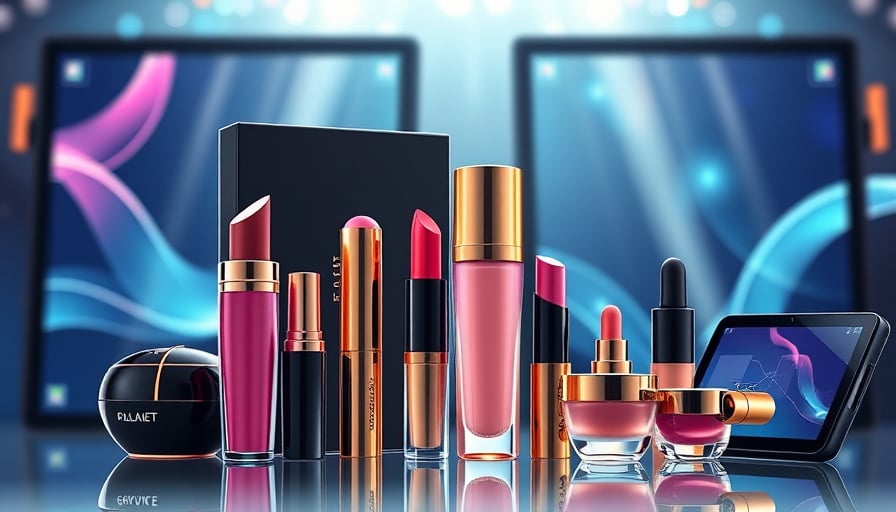L’Oréal’s Digital Surge and the Shifting Luxury Landscape
L’Oréal SA, the French consumer‑staples juggernaut headquartered in Clichy, is riding a wave of digital expansion that is reshaping its sales dynamics across key markets. Recent reports from economictimes.indiatimes.com and Reuters underscore how the company’s e‑commerce strategy, coupled with broader trends in luxury consumer behavior, is influencing its financial trajectory.
1. Accelerated Growth in India’s Quick‑Commerce Ecosystem
India’s consumer base has long been a hotbed for beauty and personal‑care products, but the past year has seen a dramatic pivot toward “quick‑commerce” (q‑commerce) platforms that promise hyper‑local delivery. According to economictimes.indiatimes.com, both L’Oréal and its peer Unilever are recording significant sales increases on these digital channels. The rapid‑delivery model allows new products to hit shelves—metaphorically, within hours—and grants the brands a competitive edge in a market that increasingly values immediacy.
The impact is multifaceted:
| Channel | Growth Driver | Market Reach |
|---|---|---|
| Quick‑commerce | Hyper‑local logistics | Immediate city‑wide coverage |
| Traditional e‑commerce | Wider product assortment | Pan‑Indian penetration |
By integrating q‑commerce into its distribution mix, L’Oréal not only taps into a burgeoning consumer expectation for speed but also gains granular data on purchase patterns, enabling more agile marketing and inventory decisions.
2. Digital Channels as Strategic Imperatives
The economictimes piece highlights that digital platforms are becoming “increasingly important” for both L’Oréal and Unilever. This trend is reflected in the company’s broader strategy of launching new products through online channels first—a tactic that shortens the product‑to‑consumer cycle. In a sector where trends evolve rapidly, the ability to test and iterate in digital markets can translate into higher conversion rates and reduced marketing spend.
Moreover, the synergy between quick‑commerce and traditional e‑commerce amplifies reach: while q‑commerce captures the impulse‑buy market, standard e‑commerce sustains long‑term relationships with repeat customers who prefer curated selections and subscription services.
3. Luxury‑Consumer Re‑engagement in China
While L’Oréal’s core focus remains mass‑market cosmetics, the company is not immune to the broader luxury revival taking root in China. A Reuters article from 27 October notes that luxury brands are targeting high‑earners with personalized experiences—private shopping areas, exclusive elevator access, and intimate events— in an effort to kindle a nascent spending recovery. L’Oréal, as a global beauty leader, is positioned to capitalize on this shift by offering premium product lines and collaborations that resonate with affluent consumers seeking exclusivity.
Although the article does not explicitly mention L’Oréal, the brand’s premium divisions (such as Lancôme and Kiehl’s) are well‑placed to benefit from the renewed appetite among China’s wealthy cohort. The emphasis on “intimate dinners” and “large‑scale shows” mirrors the experiential marketing that beauty brands increasingly employ to create emotional connections with their audiences.
4. Market Sentiment and Valuation Signals
eyeQ’s weekly analysis on 27 October provides a macro‑valuation lens that can contextualise L’Oréal’s performance. While the analysis does not name L’Oréal explicitly, the framework—comparing current share prices against a model value derived from macroeconomic conditions—suggests that stocks trading below the model value may be undervalued, whereas those above may be overvalued. Given L’Oréal’s market cap of €199.53 billion and a P/E ratio of 32.609, investors might view the stock as premium‑priced relative to broader consumer staples benchmarks.
The confluence of strong e‑commerce growth in India and a luxury resurgence in China could, however, justify a higher valuation. If the company continues to demonstrate accelerated revenue streams from digital channels, the market may recalibrate its expectations, potentially driving the stock closer to its intrinsic value.
5. Bottom Line
L’Oréal’s recent strategic initiatives—embedding quick‑commerce into its sales architecture, leveraging traditional e‑commerce for sustained reach, and aligning premium offerings with the evolving luxury consumer in China—signal a dynamic pivot toward digital‑first growth. These moves are expected to reinforce the company’s market leadership, especially as global consumer habits shift toward immediacy and personalization. Investors and analysts alike will be watching closely to see whether these trends translate into the revenue and profitability growth that underpin L’Oréal’s premium valuation.
